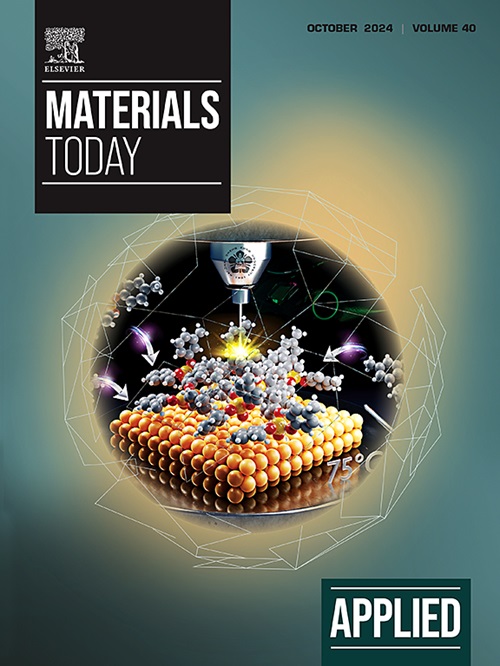Zinc-doped inorganic bioactive materials: a comprehensive review of properties and their applications in osteogenesis, antibacterial, and hemostasis
IF 6.9
2区 材料科学
Q1 MATERIALS SCIENCE, MULTIDISCIPLINARY
引用次数: 0
Abstract
The trace element zinc is often referred to as “the electric spark of life”. The reported physiological roles of zinc as a doping element in a variety of novel bioactive materials include promoting osteogenesis, improving antimicrobial activity, affecting blood coagulation, and inducing anticancer properties, while maintaining good biocompatibility and biodegradability. This review outlines the fundamental physiological mechanisms of zinc activity and provides a detailed overview of the material composition, characterization techniques, and application prospects of zinc-doped bioactive glasses (melt-derived and sol-gel methods), and bioceramics (including bioactive cements and coatings) reported in recent years. The key finding is that the adding zinc to various bioactive materials significantly enhances the versatility and flexibility of applications, such as bone tissue engineering, antibacterial implants and wound hemostasis. In addition, it is worth noting there is still room for improvement in achieving precise delivery and controlled release of zinc ions from the materials, ensuring a balance between therapeutic efficacy and safety of bioactive materials. In a word, this review aspires to summarize the advancements in the osteogenesis, antibacterial and hemostatic applications of metal-doped inorganic bioactive materials and provide guidance for the design and development of innovative bioactive materials in biomedical field. This review provides an in-depth review of the properties and applications of zinc-doped inorganic bioactive materials, including bioactive glasses (melt-derived and sol-gel methods), bioceramics, biocements, and bio-coatings. The key finding is that the adding zinc to various bioactive materials not only enhances the mechanical properties of the materials, but also significantly increases the versatility and flexibility of bone tissue engineering applications by promoting excellent osteogenesis, inhibiting bacterial growth, and promoting good hemostasis through multiple biological mechanisms. Furthermore, it is important to consider the advancements achieved through the use of zinc ions in the study of diabetes microenvironment osteogenesis, Alzheimer's disease (AD), atherosclerosis, and other areas. This will help in exploring wider applications of zinc and in addressing current technical constraints to create novel zinc-doped biomaterials and therapeutics.掺锌无机生物活性材料:特性及其在成骨、抗菌和止血方面应用的全面综述
微量元素锌通常被称为 "生命的电火花"。据报道,锌作为掺杂元素在各种新型生物活性材料中的生理作用包括促进成骨、提高抗菌活性、影响血液凝固和诱导抗癌特性,同时保持良好的生物相容性和生物可降解性。本综述概述了锌活性的基本生理机制,并详细介绍了近年来报道的掺锌生物活性玻璃(熔融法和溶胶-凝胶法)和生物陶瓷(包括生物活性水泥和涂层)的材料组成、表征技术和应用前景。主要发现是,在各种生物活性材料中添加锌可显著提高应用的多样性和灵活性,如骨组织工程、抗菌植入物和伤口止血。此外,值得注意的是,在实现材料中锌离子的精确输送和控制释放、确保生物活性材料的治疗效果和安全性之间的平衡方面,仍有改进的空间。总之,本综述旨在总结掺金属无机生物活性材料在成骨、抗菌和止血方面的应用进展,为生物医学领域创新生物活性材料的设计和开发提供指导。本综述深入探讨了掺锌无机生物活性材料的特性和应用,包括生物活性玻璃(熔融法和溶胶-凝胶法)、生物陶瓷、生物水泥和生物涂层。主要发现是,在各种生物活性材料中添加锌不仅能增强材料的机械性能,还能通过多种生物机制促进良好的成骨、抑制细菌生长和促进良好的止血,从而显著提高骨组织工程应用的多功能性和灵活性。此外,在糖尿病微环境成骨、阿尔茨海默病(AD)、动脉粥样硬化等领域的研究中使用锌离子所取得的进展也很重要。这将有助于探索锌的更广泛应用,并解决目前的技术限制,以创造新型掺锌生物材料和疗法。
本文章由计算机程序翻译,如有差异,请以英文原文为准。
求助全文
约1分钟内获得全文
求助全文
来源期刊

Applied Materials Today
Materials Science-General Materials Science
CiteScore
14.90
自引率
3.60%
发文量
393
审稿时长
26 days
期刊介绍:
Journal Name: Applied Materials Today
Focus:
Multi-disciplinary, rapid-publication journal
Focused on cutting-edge applications of novel materials
Overview:
New materials discoveries have led to exciting fundamental breakthroughs.
Materials research is now moving towards the translation of these scientific properties and principles.
 求助内容:
求助内容: 应助结果提醒方式:
应助结果提醒方式:


